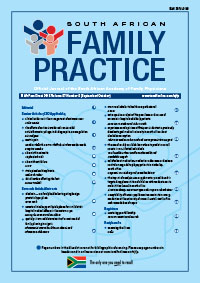Spatial pattern and determinants of unmet need of family planning in Nigeria
Keywords:
Bayesian inference, Binomial, family planning, geo-additive model, Nigeria
Abstract
Background: Nigeria still grapples with low family planning (FP) use and a high fertility rate. This study explores the factors associated with the unmet need for FP and the coldspots of unmet need for FP in Nigeria. Methods: The 2013 Nigerian Demographic Health Survey (NDHS) data was used to investigate the unmet need for FP in Nigeria. A geo-additive model was specified to simultaneously measure the fixed, nonlinear, spatial and random effects inherent in the data. The fixed effect of categorical covariates was modelled using the diffuse prior, the nonlinear effect of continuous variable was modelled using the P-spline with second-order random walk, the spatial effects followed Markov random field priors while the exchangeable normal priors were used for the random effect of the community. The binomial distribution was used to handle the dichotomous nature of the dependent variable. Results: North East (OR: 1.8404, CI: 1.6170, 2.0941), North West (OR: 1.1145, CI: 1.1454, 1.1789), primary education (OR: 1.0441, CI: 0.9680, 1.1286), Hausa (OR: 2.7031, CI: 2.3037, 3.1513), birth interval greater than 12 months (OR: 1.0909, CI: 1.0447, 1.1379), community (OR: 1.6733, CI: 1.5261, 1.7899) and states (OR: 6.0879, CI: 2.5995, 29.6274) significantly increased the unmet need for FP. Conclusion: The unmet need for FP in Nigeria is positively associated with the Northern region, low level of education and birth interval. (Full text available online at www.medpharm.tandfonline.com/ojfp) S Afr Fam Pract 2015; DOI: 10.1080/20786190.2015.1071536
Published
2015-08-26
Section
Research Articles
By submitting manuscripts to SAFP, authors of original articles are assigning copyright to the South African Academy of Family Physicians. Copyright of review articles are assigned to the Publisher, Medpharm Publications (Pty) Ltd, unless otherwise specified. Authors may use their own work after publication without written permission, provided they acknowledge the original source. Individuals and academic institutions may freely copy and distribute articles published in SAFP for educational and research purposes without obtaining permission.

